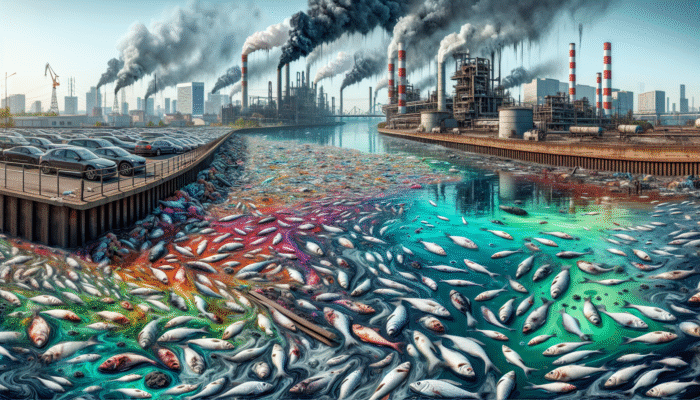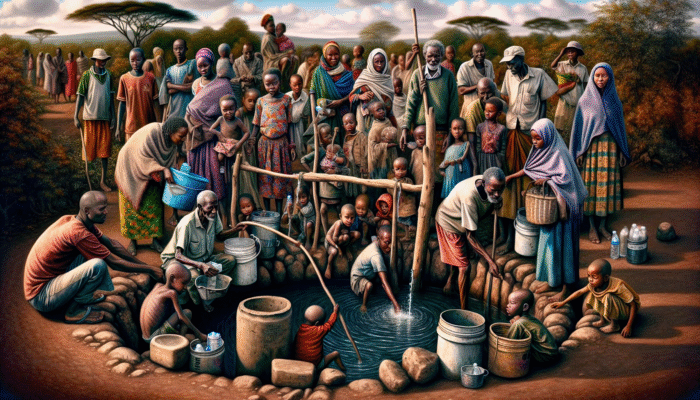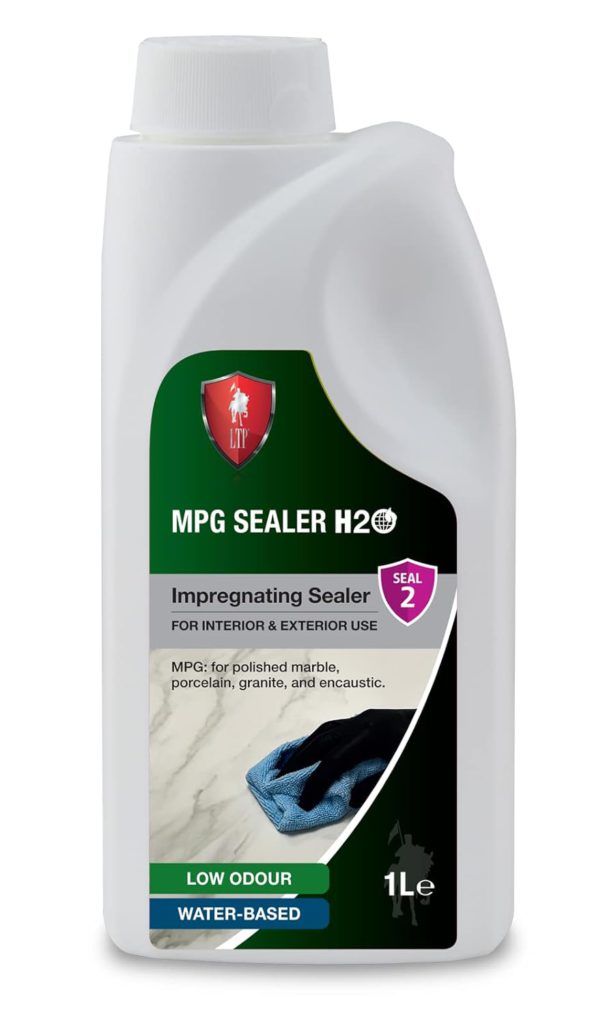Uncovering the Primary Sources of Water Contamination in Urban Settings
Exploring the Effects of Industrial Pollutants on City Waterways

Urban environments operate as multifaceted ecosystems intricately intertwined with numerous industrial activities that spur economic advancement yet pose considerable threats to vital water resources. The infiltration of industrial pollutants, including heavy metals like lead and mercury, along with volatile organic compounds (VOCs), often permeates urban waterways. This contamination significantly jeopardizes public health and safety. A prominent instance is the infamous Love Canal incident in New York, where buried industrial waste beneath residential areas triggered a grave public health crisis with global repercussions. Cities worldwide, from Mumbai to Mexico City, continue to confront similar issues due to unregulated industrial runoff, transforming previously thriving water bodies into toxic wastelands that endanger both ecosystems and human health.
Industries often overlook the enduring consequences of their operations, leading to devastating outcomes for entire communities. In regions such as Bangladesh, rapid industrial growth has surpassed the capacity of environmental regulations, resulting in rivers that once teemed with biodiversity now carrying lethal chemicals. Residents grapple with the dual burdens of economic struggles and health hazards, as their essential water sources turn into conduits for disease transmission. There is an urgent need for urban areas to adopt pioneering technologies and enforce stricter regulations to mitigate the severe repercussions of industrial activities on urban water contamination.
Establishing comprehensive waste management systems emerges as a crucial approach to preventing industrial pollutants from infiltrating waterways. The implementation of sophisticated filtration methods and closed-loop manufacturing processes can significantly reduce the amount of hazardous waste entering our water systems. Collaborative efforts between municipal governments and industrial sectors are essential to developing extensive pollution control strategies that not only foster sustainability but also encourage economic growth. Moving forward demands bold partnerships and an unwavering commitment to transformative actions.
Tackling the Challenges of Agricultural Runoff on Water Quality
While agriculture is essential for supporting the global population, it concurrently serves as a significant source of water pollution. Agricultural runoff, laden with fertilizers and pesticides, flows into rivers and lakes, aggravating the issue of urban water contamination. The alarming “dead zones” in the Gulf of Mexico starkly demonstrate the severe consequences of unchecked agricultural practices. Nutrient-rich runoff promotes harmful algal blooms that suffocate aquatic ecosystems and create toxic conditions detrimental to public health.
Globally, areas like the Nile Delta and the Great Plains are facing similar challenges. Pesticides, designed for crop protection, frequently leach into drinking water supplies, compromising public health with hazardous chemicals associated with both acute and chronic illnesses. Communities located in agricultural hotspots, especially in regions of Southeast Asia, are experiencing the devastating outcomes of contaminated water sources, struggling with gastrointestinal disorders, skin diseases, and long-term health complications that could have been prevented.
To combat agricultural runoff, innovative practices such as precision farming should be adopted, optimizing the application of fertilizers and pesticides based on real-time data. Additionally, establishing buffer zones between agricultural lands and waterways can drastically reduce runoff. These forward-thinking strategies not only protect the environment but also shield local communities from the dangers of urban water contamination.
Addressing the Dangers of Inadequate Sewage and Wastewater Management
In the realm of sewage management, cities must act promptly; however, insufficient treatment can lead to catastrophic outcomes. Poorly managed sewage systems can become breeding grounds for bacteria and viruses, resulting in the contamination of vital urban water supplies. The notorious situation in Flint, Michigan, where lead-contaminated water devastated an entire community, serves as a cautionary tale for cities across the globe. This tragedy highlighted the critical link between insufficient sewage treatment and public health emergencies.
Urban centers like Jakarta and Lagos also encounter significant challenges stemming from inadequately treated sewage. In these settings, untreated wastewater poses severe health risks, triggering outbreaks of diseases such as cholera and gastrointestinal disorders. The quest for clean water can seem daunting, especially in areas with inadequate infrastructure. Vulnerable populations, including children and the elderly, disproportionately bear these burdens, often facing prolonged health issues.
Investing in modern sewage treatment facilities is crucial for cities aiming to combat urban water contamination. Upgrading outdated systems and adopting decentralized wastewater treatment solutions can dramatically improve water quality. Municipalities must prioritize the development of resilient infrastructure to ensure that every drop of water is safe for consumption, thereby safeguarding the health of their residents.
Assessing the Health Risks Associated with Contaminated Water

Examining the Risks of Acute Health Issues Linked to Contaminated Water
Have you ever pondered what may be lurking in your tap water? The reality could be quite disturbing. Contaminated urban water poses a significant risk of causing a variety of acute illnesses, with symptoms ranging from debilitating diarrhea to severe vomiting. Each sip from a contaminated tap could lead to serious health consequences, particularly for unsuspecting residents living in cities with aging infrastructure or lax regulatory enforcement.
For example, the outbreak of Legionnaires’ disease in Flint, Michigan, was traced back to contaminated water systems, resulting in multiple fatalities and thousands of hospital admissions. Such incidents underscore how urban water contamination can escalate rapidly, transforming an ordinary glass of water into a source of illness. In cities like Dhaka, where untreated water is a daily reality for many, local families face ongoing threats, contending with waterborne diseases that incapacitate them and worsen their poverty.
The implications extend beyond individual suffering; entire communities can experience the cascading effects. Disease outbreaks can overwhelm local healthcare systems, incur significant economic burdens, and strain community resources. Addressing acute illnesses linked to water contamination requires immediate actions, including regular water testing and swift remediation efforts. By prioritizing the safety of urban water supplies, we can protect public health and restore trust in the water we consume.
Investigating the Long-Term Health Effects of Chronic Diseases Related to Contaminated Water
While acute illnesses present immediate dangers, the long-term health effects of urban water contamination can prove to be even more insidious. Prolonged exposure to polluted water can result in the development of severe health conditions, including cancer, kidney damage, and neurological disorders. The link between contaminated water supplies and chronic diseases is becoming increasingly evident, prompting a global call to action.
Consider the case of lead exposure from corroded pipes, as seen in Flint. Long-term consumption of lead-tainted water can lead to severe cognitive impairments, particularly in children, whose developing brains are especially vulnerable. Moreover, communities near industrial sites, such as those along heavily polluted rivers in Brazil, face increased risks of chronic illnesses due to environmental exposure to hazardous substances.
Preventing chronic diseases necessitates a comprehensive approach. Cities must invest in modernizing outdated infrastructure while ensuring regular monitoring of water sources for contaminants. Public health education initiatives that inform residents about the dangers associated with urban water contamination can empower communities to take action and advocate for access to clean water.
Addressing the Challenges Faced by At-Risk Populations

Not all communities have the capacity to address the health repercussions of urban water contamination. Marginalized populations—children, the elderly, and low-income families—often bear the brunt of this crisis. These groups typically lack the resources to seek alternative water sources or effectively tackle health complications resulting from contaminated supplies.
In numerous developing countries, access to safe drinking water remains a luxury; thus, disadvantaged communities are frequently compelled to rely on polluted sources. For instance, residents of slums in Nairobi navigate the perilous waters of contaminated wells, often resulting in severe health repercussions. Children, in particular, are exceedingly vulnerable to the effects of waterborne diseases, which can hinder their growth and development, perpetuating cycles of poverty for their families.
Addressing the needs of vulnerable populations necessitates targeted interventions, such as distributing clean water supplies or establishing community health programs focused on water safety education. Cities must prioritize ensuring access to safe drinking water so that all residents, regardless of socioeconomic status, have the opportunity to thrive and succeed.
Establishing Comprehensive Detection and Monitoring Protocols
The Essential Role of Regular Water Quality Testing
How can you determine if your water is safe to consume? Regular water quality testing serves as a vital mechanism for detecting contaminants in urban water contamination. This procedure involves sampling water from various sources and analyzing it for harmful substances. In cities like Tokyo, stringent testing protocols guarantee that millions of residents enjoy access to clean and safe drinking water.
Innovative technologies are transforming the field of water quality testing. From advanced sensors capable of identifying microscopic contaminants to handheld testing kits that provide immediate results, the future of water monitoring looks promising. In regions where traditional testing methods may be prohibitively slow or expensive, these innovations can make a notable impact. For instance, remote rural communities can utilize mobile testing technologies to monitor water quality and address contamination issues before they escalate.
Public awareness is crucial in promoting routine water quality testing. Cities should implement transparent reporting systems that keep residents informed about the quality of their water. By fostering a culture of accountability and vigilance, communities can unite to demand higher standards and protect their water supplies from urban water contamination.
Harnessing Technological Innovations for Enhanced Water Monitoring
The digital revolution has infiltrated our water systems, ushering in a wave of technological advancements that are transforming how we identify contaminants. Cutting-edge technologies, such as the Internet of Things (IoT) and artificial intelligence (AI), are paving the way for smarter and more efficient monitoring of urban water contamination.
IoT devices can be strategically installed throughout a city’s water distribution network, providing real-time data on water quality. Imagine sensors that alert municipal officials the moment a contaminant is detected, enabling immediate intervention and reducing exposure to harmful substances. Cities like Barcelona are leading the way in implementing such technologies, demonstrating the potential of innovation in addressing water safety challenges.
AI algorithms can analyze vast datasets to identify trends in water quality, predict potential contamination events, and recommend proactive measures. By leveraging technology, cities can revolutionize their management of water resources, ultimately resulting in safer supplies for all residents. The future of water management is not solely about treatment; it is also about prevention and proactive initiatives.
Enhancing Transparency with Public Reporting Systems
Transparency is the cornerstone of trust. In the context of urban water contamination, public reporting systems act as a beacon for communities seeking information about their water quality. Cities globally are increasingly adopting open data initiatives that allow residents to access real-time information regarding contaminants in their water supply.
For instance, municipalities in Canada have developed online dashboards that enable citizens to view water quality reports, empowering residents to remain informed and proactive. This level of transparency not only empowers individuals but also motivates local authorities to uphold high standards of water safety. Communities that are aware of potential contamination can take necessary precautions, such as utilizing water filters or exploring alternative water sources.
Moreover, public reporting systems can encourage engagement and dialogue between residents and local authorities. When communities feel informed, they are more likely to advocate for vital infrastructure improvements or policy changes that ensure their water remains safe. By keeping the public informed, cities can cultivate stronger relationships and work collaboratively to tackle urban water contamination.
Implementing Comprehensive Prevention Strategies
Prioritizing Infrastructure Enhancements for Water Safety
The backbone of any city’s water system lies in its infrastructure. Upgrading water treatment facilities is essential for preventing contamination and ensuring residents have access to safe drinking water. Many cities, especially those with outdated infrastructure, face significant challenges in maintaining clean water supplies. Investing in modernization efforts can significantly enhance water quality, reducing the risks associated with urban water contamination.
Take San Diego, for example, which has made substantial investments in its water infrastructure to improve treatment processes and expand filtration capabilities. These upgrades not only enhance water quality but also bolster the city’s resilience against droughts and other environmental challenges. Cities around the globe should take inspiration from such initiatives, prioritizing the renovation of aging pipes, treatment plants, and distribution systems.
However, infrastructure improvements must extend beyond merely treatment facilities. Urban planners should also consider the implications of land use and zoning on water quality. Implementing green infrastructure, such as permeable pavements and rain gardens, can help mitigate stormwater runoff and naturally filter pollutants before they reach water sources. Collaboration between city planners and environmental scientists is essential for developing comprehensive strategies that protect urban waters from contamination.
Strengthening Regulatory Measures to Safeguard Water Resources
Robust regulations serve as the unsung heroes of water safety, providing the necessary framework to manage pollution sources and protect our water supplies from urban water contamination. Governments worldwide must implement and enforce regulations that restrict the discharge of harmful substances into water bodies, holding industries accountable for their actions.
The Clean Water Act in the United States serves as an exemplary model of how regulatory measures can enforce safe water practices. By mandating permits for discharges into navigable waters and establishing water quality standards, it has significantly improved the health of numerous water bodies. Nonetheless, much work remains to be done. Cities should adapt regulations to address emerging contaminants, such as microplastics and pharmaceuticals, which pose new challenges to water quality.
Collaboration with regulatory agencies and community stakeholders is crucial for developing effective policies. Ensuring that the voices of those most impacted by water contamination are heard will lead to more comprehensive and inclusive regulations. By fostering a collaborative spirit, cities can create a regulatory framework that actively safeguards public health while promoting environmental sustainability.
Empowering Communities Through Educational Programs
Knowledge is power, particularly when it comes to protecting our water resources. Community education plays a pivotal role in preventing urban water contamination by equipping residents with the knowledge and tools necessary to take action. When individuals understand the risks associated with water pollution, they are more likely to engage in practices that protect their water supplies.
Cities must invest in thorough educational campaigns that inform residents about water conservation, pollution prevention, and the significance of clean water. For example, workshops on the proper disposal of household chemicals can help reduce the risk of contamination from runoff. Communities that grasp the connection between their actions and water quality are more inclined to advocate for sustainable practices and policies.
Moreover, education should be tailored to meet the specific needs of diverse communities. Targeted programs for vulnerable populations can empower residents to protect their health and advocate for their rights. By fostering a culture of environmental stewardship, cities can create a sustainable future where residents collaborate to preserve their water supplies.
Adopting Technological Innovations for Enhanced Water Management
The future of water quality management is anchored in technological advancements that improve treatment efficiency. From smart sensors that continuously monitor water quality to advanced filtration systems capable of eliminating a wide range of contaminants, technology is reshaping how cities address urban water contamination.
For instance, reverse osmosis systems are increasingly utilized in urban settings, providing a reliable method for removing impurities from drinking water. Concurrently, ultraviolet (UV) purification technology offers a chemical-free approach to disinfecting water, effectively eliminating harmful microorganisms without introducing additional pollutants. Cities must explore and invest in these state-of-the-art technologies to ensure their water management systems are robust and effective.
Additionally, data analytics can aid cities in optimizing their water treatment processes and identifying potential sources of contamination before they arise. By leveraging big data, municipalities can make informed decisions that enhance water quality while minimizing resource consumption. The continuous evolution of technology presents exciting opportunities for advancing the safety and sustainability of our urban water supplies.
Exploring Effective Solutions for Water Treatment
Implementing Advanced Filtration Systems for Safe Drinking Water
In the quest to provide access to safe drinking water, effective filtration systems are indispensable. These systems act as the first line of defense against contaminants in urban water contamination. From activated carbon filters to sophisticated membrane filtration technologies, a diverse range of options is available to enhance water quality across urban areas.
Cities have begun employing multi-barrier approaches that integrate various filtration methods for optimal results. For example, Singapore uses a comprehensive water treatment strategy that incorporates advanced filtration techniques to produce potable water from treated wastewater. This innovative practice not only enhances water quality but also promotes sustainable water reuse practices, setting a benchmark for other cities globally.
Home filtration systems play a critical role in providing residents with peace of mind. Point-of-use filters can effectively remove specific contaminants, enabling individuals to take control of their water quality. By encouraging residents to utilize filtration systems, cities can mitigate the risks associated with urban water contamination and foster a culture of water safety.
Educating the public about filtration methods is vital for maximizing their impact. Residents should be informed about the types of filters available, their functionalities, and maintenance requirements. An informed populace is better equipped to make choices that protect their health and wellbeing.
Utilizing Chemical Treatments for Effective Water Purification
Chemical treatments have long been integral in the fight against urban water contamination. Techniques such as chlorine disinfection and the use of coagulants play a crucial role in eliminating harmful pathogens and reducing contaminants in municipal water supplies. However, the reliance on chemicals presents challenges, often resulting in byproducts that can introduce additional health risks.
For example, the use of chlorine can lead to the formation of trihalomethanes (THMs), which have been associated with numerous health concerns, including cancer. As awareness of the drawbacks of chemical treatments increases, cities are increasingly exploring alternatives and complementary methods for water purification.
Ozone and UV treatments are emerging as viable substitutes for traditional chemical disinfection methods. Ozone, for instance, can effectively eliminate pathogens without leaving harmful residues, while UV light disinfects water without altering its chemical structure. Cities must evaluate and implement these alternatives to develop safer and more sustainable water treatment practices.
Moreover, ongoing research into advanced chemical treatments holds promise for tackling the complexities of urban water contamination. Innovations such as advanced oxidation processes (AOPs) utilize powerful oxidants to degrade contaminants, offering new pathways for safe and effective water treatment.
Exploring Alternative Water Sources for Sustainable Supply
The pursuit of clean water does not have to rely solely on traditional sources. Embracing alternative water sources can significantly diminish dependence on contaminated urban water contamination. Rainwater harvesting, for example, is gaining popularity in urban areas as a sustainable solution to combat water scarcity while providing supplementary water supplies.
Cities like Melbourne have successfully implemented rainwater harvesting systems, capturing stormwater for non-potable uses such as irrigation and toilet flushing. This innovative approach not only alleviates the burden on municipal water supplies but also mitigates the risks of flooding and urban runoff.
Desalination represents another alternative gaining traction, particularly in coastal cities facing freshwater shortages. Although the process can be energy-intensive and costly, advancements in technology are making desalination more feasible and sustainable. As cities confront climate change and dwindling freshwater resources, exploring diverse water sources becomes essential for enhancing resilience and ensuring access to safe drinking water.
Community involvement plays a crucial role in promoting alternative water sources. Educating residents about the benefits of rainwater harvesting or incentivizing the installation of greywater systems can lead to widespread adoption and ultimately improve overall water quality.
Implementing Advanced Purification Technologies for Enhanced Safety
When conventional methods fall short, advanced purification technologies offer effective solutions. By employing cutting-edge techniques like reverse osmosis and UV purification, cities can significantly enhance the quality of their water supplies, effectively addressing urban water contamination issues.
Reverse osmosis systems excel in filtering out a wide range of contaminants, including heavy metals, salts, and microorganisms. By forcing water through a semipermeable membrane, these systems exclude harmful substances, providing safe drinking water for communities. Cities like Los Angeles are incorporating these technologies to bolster their water resilience, ensuring that residents have access to clean supplies even during drought conditions.
Conversely, UV purification technology utilizes ultraviolet light to eliminate pathogens from water. This chemical-free method is not only effective but also environmentally friendly. Integrating UV systems into existing water treatment facilities can enhance disinfection processes, guaranteeing that every drop is safe for consumption.
As cities continue to innovate and adapt their water management practices, embracing advanced purification technologies will be crucial for overcoming the challenges of urban water contamination. Investment in research and development is vital to unlocking new solutions that will protect public health and conserve water resources for future generations.
Analyzing the Economic Impacts of Water Contamination
Examining the Financial Consequences of Healthcare Costs
The consequences of urban water contamination extend well beyond health-related issues; they also entail significant financial implications. Treating illnesses associated with contaminated water can impose a substantial burden on healthcare systems, leading to skyrocketing medical expenses for both individuals and municipalities. In urban areas where water quality issues persist, healthcare costs can become a critical strain on local economies.
Take, for instance, the situation in Flint, Michigan, where the public health crisis caused by contaminated water resulted in millions of dollars in healthcare expenses. The costs associated with treating lead poisoning, combined with the long-term health effects experienced by residents, have proven devastating. The financial impact is widespread, affecting not only families but also local businesses and government budgets.
Investing in preventive measures can help alleviate these costs. By prioritizing water quality management and infrastructure improvements, cities can reduce the incidence of waterborne illnesses, ultimately lowering healthcare expenses. Investments in public health yield long-term benefits, resulting in healthier populations and more robust economies.
Communities must also consider the broader economic ramifications of water contamination. Areas with known water quality issues may see drops in property values, as potential buyers are deterred by the risks associated with contaminated supplies. By directly addressing these challenges, cities can foster a healthier environment and restore investor confidence.
The Influence of Water Quality on Real Estate Markets
Water quality challenges can have a pronounced effect on real estate markets, with contaminated urban water contamination leading to declines in property values. Prospective homebuyers often prioritize safety and quality of life, and when water quality is called into question, they may hesitate to invest in neighborhoods plagued by contamination concerns.
In cities like Newark, New Jersey, residents have felt the impact of water quality on their property values. When reports of lead contamination emerged, prospective buyers became reluctant to invest in homes, resulting in stagnation in the housing market. Homeowners found themselves trapped in a cycle of declining property values, struggling to sell or refinance their properties.
Investing in water quality improvements can serve as a catalyst for revitalizing neighborhoods and restoring property values. Cities that proactively address contamination issues can reassure potential buyers, fostering community pride and promoting economic growth. By prioritizing public health and safety, municipalities can create vibrant, appealing neighborhoods that attract both residents and investors.
Furthermore, cities can leverage water quality improvements as a marketing advantage, highlighting the safety and desirability of their communities. Positive messaging surrounding access to clean water can draw new residents and businesses, stimulating local economies and enhancing overall quality of life.
Assessing the Effects of Water Contamination on Tourism and Local Businesses
Clean water is not merely a necessity; it also serves as a valuable asset. Contaminated urban water contamination can deter tourists and adversely impact local businesses, leading to economic downturns in cities that heavily rely on tourism revenue. Visitors seek destinations that offer not only stunning landscapes but also safe and reliable amenities, including drinking water.
For instance, cities like Venice, celebrated for its beautiful canals, attract millions of tourists each year. Should water quality concerns arise, the city’s reputation could suffer, leading to a decline in visitor numbers and subsequent financial losses for local businesses. The economic repercussions extend beyond tourism; restaurants, hotels, and shops may all feel the financial strain when water safety is called into question.
Cities must prioritize access to clean water to remain competitive in the global tourism market. By implementing robust water quality management practices and promoting safe drinking water initiatives, municipalities can position themselves as desirable tourist destinations. Investing in clean water not only enhances the health and safety of residents but also attracts visitors eager to explore vibrant, thriving cities.
Additionally, sustainable tourism practices, such as advocating for eco-friendly water management, can further enhance a city’s appeal. Today’s travelers are increasingly mindful of environmental issues and may prefer destinations that prioritize sustainability and public health. By championing clean water initiatives, cities can create a win-win scenario that fosters economic growth while protecting vital resources.
Looking to the Future: Advancing Water Quality Management
Anticipating Policy Developments for Enhanced Water Safety
The future of urban water contamination management is closely tied to progressive policy developments. As awareness of water quality concerns increases, governments and organizations are taking proactive measures to implement new policies aimed at strengthening water safety. The emphasis on sustainability and public health is becoming a driving force behind these changes.
In various countries, policymakers are beginning to recognize the importance of comprehensive water management strategies that address both immediate and long-term concerns. The introduction of stricter regulations regarding industrial discharges and agricultural runoff is a crucial step toward protecting urban water supplies. Communities around the world are advocating for policies that prioritize access to clean water, paving the way for a healthier future.
Furthermore, public-private partnerships are emerging as powerful catalysts for change. Collaboration among governments, private enterprises, and non-profit organizations can lead to innovative solutions that tackle water quality challenges. By pooling resources and expertise, stakeholders can create impactful policies that benefit communities while fostering economic growth.
As cities evolve, ongoing dialogue between residents and policymakers is essential. Involving communities in discussions about water quality and safety can lead to more inclusive decision-making processes. A collaborative approach to policy development ensures that the voices of those affected by urban water contamination are heard and considered.
Embracing Technological Innovations for Superior Water Management
The outlook for urban water contamination management is encouraging, thanks to a surge of technological innovations. Emerging technologies are poised to revolutionize how cities monitor, treat, and protect their water supplies. From smart sensors to artificial intelligence, the future of water management is becoming increasingly data-driven and efficient.
Smart water management systems that leverage IoT technology enable cities to monitor water quality in real-time, facilitating rapid responses to contamination incidents. By utilizing data analytics, municipalities can identify patterns and potential risks, leading to proactive measures and enhanced water safety. Integrating these technologies into existing infrastructures can strengthen the overall resilience of urban water systems.
Moreover, advancements in treatment technologies, such as advanced oxidation processes and membrane filtration, pave the way for more effective removal of contaminants. Cities that adopt these innovations can ensure cleaner, safer drinking water for their residents, effectively addressing the challenges posed by urban water contamination.
Public awareness of these technological advancements is equally important. Educating residents about new solutions and practices can foster a culture of innovation within communities. Cities that actively promote and showcase their water management efforts can inspire other municipalities to adopt similar practices, further amplifying the positive impact on public health and safety.
Encouraging Community Involvement for Sustainable Solutions
The future of urban water contamination management heavily relies on community engagement. As residents become more informed about water quality issues, their active participation can drive meaningful change. From grassroots advocacy to local initiatives, communities play a crucial role in shaping policies and practices that protect their water supplies.
Cities must prioritize outreach and educational efforts that empower residents to take action. Community workshops, informational campaigns, and collaborative projects can nurture a sense of ownership and responsibility towards local water resources. When individuals feel connected to their water quality, they are more inclined to advocate for necessary improvements and support sustainable practices.
Moreover, creating channels for communication between residents and local authorities can enhance transparency and accountability. Community representatives can participate in decision-making processes, ensuring that the concerns and perspectives of those most affected by urban water contamination are addressed.
As cities continue to evolve, engaging residents in discussions about water quality will be paramount. The insights gleaned from community members can help shape policies that reflect the unique needs and challenges of each locality. By fostering a spirit of collaboration, cities can build resilient communities capable of tackling the pressing issues surrounding water safety and public health.
Prioritizing Infrastructure Upgrades to Ensure Water Quality
The call for infrastructure upgrades resonates across cities globally, particularly emphasizing the need to enhance water systems to combat urban water contamination. As outdated infrastructure poses substantial risks to water quality, cities must invest in modernizing their systems to ensure safe drinking water for residents.
Upgrading aging pipes, expanding treatment facilities, and incorporating green infrastructure solutions can dramatically improve water management practices. Cities like New York have embarked on ambitious infrastructure projects aimed at enhancing water quality and minimizing contamination risks. These upgrades not only yield immediate benefits but also lay the groundwork for a sustainable future.
Furthermore, cities should explore innovative funding strategies to support infrastructure improvements. Public-private partnerships, grants, and community engagement can help rally resources for essential water system upgrades. By prioritizing investments in clean water infrastructure, cities can protect public health while promoting economic growth.
The advantages of infrastructure upgrades extend beyond immediate safety concerns. A modernized water system enhances a city’s resilience to climate change, ensuring that communities can adapt to shifting environmental conditions. By creating robust infrastructure, cities can secure their water supplies for generations to come.
Establishing Comprehensive Regulatory Frameworks for Water Safety
The establishment of thorough regulatory frameworks is crucial for effectively addressing urban water contamination. As cities grapple with the challenges posed by pollution and contamination, policymakers must prioritize creating comprehensive regulations that safeguard water quality and public health.
Robust regulatory measures can assist in controlling industrial discharges, limiting agricultural runoff, and setting stringent standards for water treatment processes. By holding industries accountable for their impact on water systems, cities can encourage responsible practices that protect local water supplies.
Moreover, regulatory frameworks should be adaptable, allowing for the incorporation of new technologies and emerging contaminants. As scientific knowledge and technology advance, regulations must evolve to effectively tackle the complexities of water quality management. Collaboration among regulatory agencies, scientists, and community stakeholders is essential for crafting effective and sustainable policies.
Monitoring and enforcement mechanisms are also critical components of regulatory frameworks. Cities must establish systems that ensure compliance with water quality standards, holding violators accountable for infractions. By reinforcing the importance of regulatory oversight, municipalities can foster a culture of accountability that prioritizes public health and safety.
Frequently Asked Questions About Water Contamination
What are the main causes of urban water contamination?
Urban water contamination can stem from various sources, including industrial pollutants, agricultural runoff, and insufficient sewage treatment practices.
How does contaminated water affect health outcomes?
Contaminated water can result in acute illnesses, such as diarrhea and vomiting, as well as chronic diseases like cancer, particularly affecting vulnerable populations.
How is water quality assessed and monitored?
Water quality is assessed through regular sampling and analysis for contaminants, employing both advanced technologies and conventional testing methods to ensure safety standards are maintained.
What technological tools assist in detecting water contaminants?
Emerging technologies, such as IoT and AI, enhance the detection of water contaminants by enabling real-time monitoring and data analysis to identify potential risks.
What strategies can cities adopt to prevent water contamination?
Cities can prevent water contamination by investing in infrastructure upgrades, establishing stringent regulations, and promoting community education on pollution prevention.
What are some effective solutions for treating contaminated water?
Effective solutions for treating contaminated water include advanced filtration systems, chemical treatments, and alternative water sources, all aimed at ensuring access to safe drinking water.
What are the economic implications of water contamination?
Water contamination can lead to increased healthcare costs, declining property values, and reduced tourism revenue, adversely affecting local economies.
What does the future hold for water quality management?
The future of water quality management involves policy advancements, technological innovations, community engagement, and infrastructure enhancements to effectively address contamination challenges.
How does community education influence water safety efforts?
Community education empowers residents to take action against water contamination, fostering a culture of responsibility and advocacy for access to clean water.
What role do regulatory measures play in managing water quality?
Regulatory measures establish standards for water quality, hold industries accountable, and promote practices that protect public health and ensure access to safe drinking water.
Join our journey on X!
The post City Water Contamination: A Universal Concern appeared first on Survival Bite.
The Article Water Contamination in Cities: A Global Issue Was Found On https://limitsofstrategy.com





